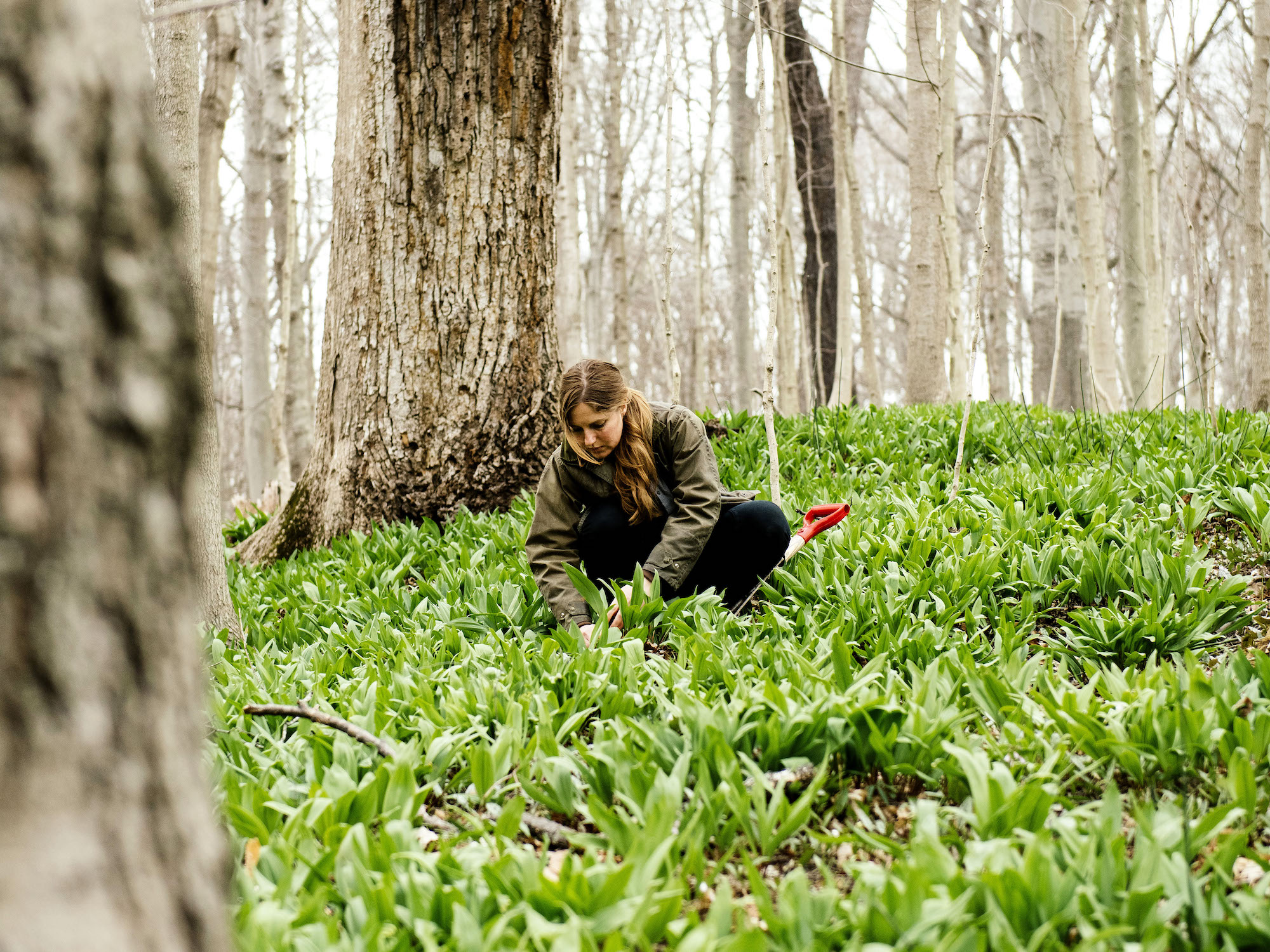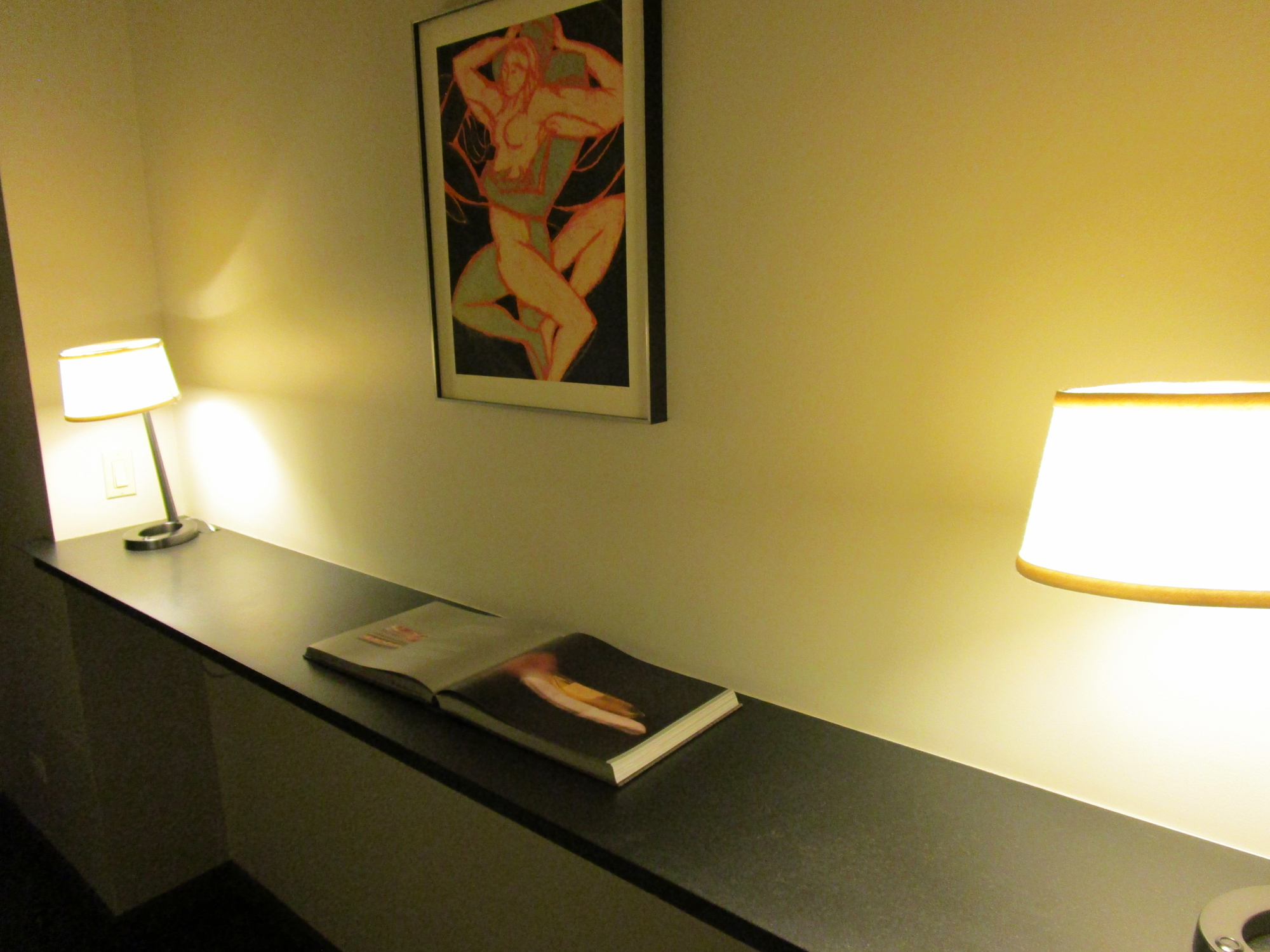“WHEN YOU ROLL UP TO THAT LEVEL, it’s not just the food. It’s the bubble you build with every step they take, everywhere the eye goes as the guest is greeted. They’re listened to. Every aspect of their experience is covered. The little picky moments matter.”
I’m interviewing Michael Muser, former manager of the late Grace, which gave me the best service I’ve ever had as a diner in the city of Chicago, and who may do it again someday. No, let me start that over. Brother Muser is preaching the gospel of the great restaurant, the restaurant in a state of grace, and how you make yours one. And it isn’t just by jacking up the prices to nosebleed level and ladling the caviar on the A5 Miyazaki beef.
“If you’re going above a price point,” by which he means close to $200 for food alone, plus more for wine and service, which can easily approach a grand for two people in the end, “there better be a voice in that kitchen. You better have something to say. But ingredients alone don’t matter. It’s not just the voice of the chef, the food, the wagyu beef. It’s everything, and if it’s not, shame on it.”
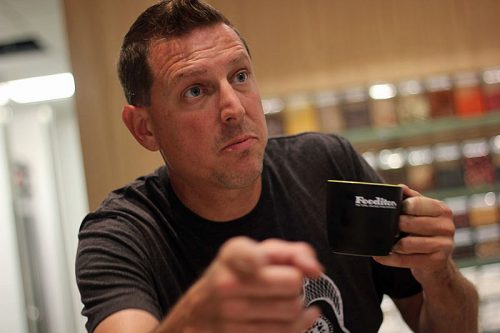
Michael Muser
Above all, it’s an army on that floor and a mad-conscientious expediter in the kitchen. He gives me an example. “No single goes to a deuce,” he says, by which he means, you never send one person carrying two plates to a table for two. Why? Because if the lady is on the right and her plate is on her left, you have to reach across with her plate, and maybe it tips a little or it grazes the plate below it, or it’s just not a perfect moment like it should be, is it?
“It’s nothing offensive,” Muser says, “but it’s half as sexy as two humans putting two plates down and one immediately evacuates as the other lovingly describes what’s on your plate. You need staffing at a level where you can do that, where you can hawkeye those tables and know instantly if something goes wrong. I know how much staffing a place like that costs, and if I could cut those dudes, I would. But you can’t.”
And it’s why, frankly, as expensive as these places can be, they’re never cash cows on food alone. I ask Muser how the management at Grace set its prices when it opened in late 2012. “Not the highest, not the lowest, somewhere in the middle,” he says, by which he means, the middle of its peer group at the tippety-top—which in 2012 would have been the likes of Alinea, L2O, Ria, Graham Elliott, Spiaggia and Tru.
“We called all the top restaurants in the country—which didn’t take that long—to see what they were asking. And was that a lesson in phone service. Everything from warm and caring to, who the fuck are you?” he says. “But what it comes down to for you as a restaurateur is, evaluate your experience and what you have to offer, be humble, read the market—and just ask yourself, how special are we?”
WHEN I STARTED TO PUT TOGETHER A LIST of the most expensive restaurants in town, I quickly noticed that four of the ten most expensive ways to eat dinner in Chicago have come into being just since August, when Otto Phan launched Kyōten; the others include Yugen, which opened in December, another sushi omakase in month-old Mako, and one that hasn’t even opened yet but has held some pop-up events, Stone Flower.
Which raises an obvious question: are there enough diners willing to spend the money to keep them all afloat? Or to put it another, slightly less obvious, way: who wants this growth at the high end, diners, or just chefs?
In raw numbers, the reason for this growth is the tasting menu format, which has taken off in fine dining around the world, but is especially an art form here. Steakhouses have traditionally been the measure of high end dining, and you could drop four or five figures at one if you really go for the baller wines. But comparatively speaking, you can dine pretty finely (before wine) for not much over a hundred bucks at a steakhouse. For instance, at RPM Steak, to pick one more or less at random, you could order oysters, a Caesar salad, a perfectly good if not top of the line ribeye and a side of broccolini, a very nice feast for a normal person, and all that would come to $95.
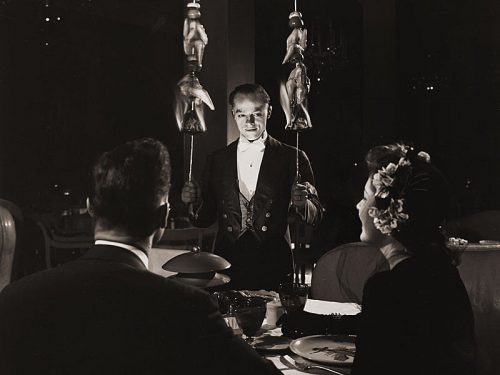
Chickens on swords at The Pump Room, 1940s (Photo: Chicago Historical Society)
A true tasting menu—at least 8 or 10 courses, in a certain order and not available individually—usually starts at least in the mid $100s and can run over $200. (Best bargain right now: Jeong’s, at $87.) If you’re paying $180 for 12 courses, say, that can easily run $15 per course, but it’s pointless to look at any one course and ask yourself, would I have paid that much for that one little bite? The tasting menu is supposed to be a dazzle of contrasts and a coherent whole, a story of the chef’s sensibility, course by course.
With that used to come all the things Muser describes—the army of waiters, the fearsomely informed somm, the box of mignardises at the end and so on. But something happened along the way that changed how we viewed what that $200+ tab was for.
Schwa, which opened in 2005, the same year as Alinea, introduced the idea of the fine dining hole in the wall. The chef-owned place doing conceptual food without a lot of the other accoutrements—like waiters (cooks run the plates to tables), or stemware, or sedate music (cooks listen to whatever they want, and you do too). As chef-owner Michael Carlson told me in 2017, “I came across this style often in Europe, in all of the smaller little towns and cities—maybe not to the extent of all the chefs bringing [the food] out, but it was definitely more intimate. It was the chef and his wife and his brother or whatever, out of necessity.”
What followed were other places that sought to capitalize on the new phenomenon of chef star power over traditional hotel-and-fancy-restaurant glitz. You could go to EL Ideas to party with Phillip Foss, you could go to Elizabeth to enter Iliana Regan’s world of goth-tinged whimsy, you could go to Goosefoot to bask in Nina Nugent’s roomfilling warmth and Chris Nugent’s nouvelle-nostalgic food. With that, you didn’t need militarized service straight out of the Hotel Negresco in 1906—you had the charismatic chef’s attention as she brought your plate straight from her kitchen to your table.
That’s one thing that has changed the atmosphere of tasting menu dining; another is FedEx. That is, as Jake Bickelhaupt told us years ago when we were shooting his underground dining Sous Rising for the Reader’s Key Ingredient in his apartment, “With a phone and a credit card, I can get the same ingredients as any chef.”
Once, part of what justified that $200 price point was the rare ingredients that you couldn’t get at Whole Foods—truffles, caviar, foie gras, super-marbled A5 Miyazaki beef; exotica like matsutake mushrooms, fresh yuzu or sea grapes. Yet in the internet age, they’re available to any cook willing to cough up for them. That has been a big leveler in terms of who could even position themselves as serving a true fine dining meal.
WHEN ILIANA REGAN OPENED ELIZABETH in 2012, she based her menu prices on shooting for a typical food cost around 30%, but also “we saw what other people were doing, absolutely,” she says. “Some of our ingredients were sourced similarly,” justifying being in the same price range as Alinea, Schwa, and EL Ideas.
But as she saw what her real costs were, she did something very unusual—she began lowering her prices at times, partly as a consequence of being on the Tock reservation platform and being able to take advantage of its capabilities for offering different pricing at off times versus peak times. “We went along with that Tock thing of dynamic pricing, to get the volume that we wanted” on weekdays, she says. It worked because “after years of being open, we know what all of our costs are. We know what our electricity is in the summer, and we know what it is in the winter. We know our bottom line, and so we know how to vary our prices and how many people we need to get in.”
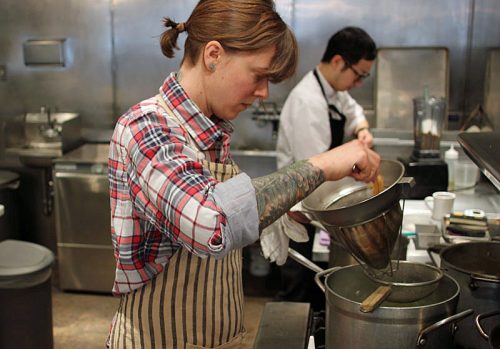
Iliana Regan at Elizabeth
The restaurant’s modest size—twenty-some seats, depending how the room is set up—and modest rent in a neighborhood location better typified by the Thai restaurant a few doors down were critical early on for giving Elizabeth the time to grow an audience. “Somebody downtown with six to ten thousand dollars a month rent and a half a million dollar loan from investors cannot do that,” experiment with dynamic pricing—or much of anything unusual, really. “We might have a menu in a slow time of the year, that’s not drawing so well. That’s when we might take one night and say we’re closed to that menu, and do something more casual, and that’s our cheaper night.”
That sort of thing is rare because no one wants to communicate that their $200 menu can be discounted. (If you get a deal, you’re paying the full price of the food, but maybe not so much of the rent or gas as somebody else; the point is, though, you’re paying more of it than an empty table does.) Regan admits price variability can be a tricky game for customers, and she’s been known to warn repeat diners when a sale might be coming up. But it’s important to her that Elizabeth be accessible to many different people, and it’s part of the trust she’s built up with her audience of diners who return to Elizabeth and follow her to her other ventures.
Which is to say, she’s a star and diners grant her the leeway. But that’s what tasting menus are all about—removing layers of the operation and creating an intimate bond between chef and diner. Elizabeth’s menu price tops out at $155; that’s the cost of the current Game of Thrones menu. But actually, she says, one of the most expensive meals she’s offered was at her mid-priced midwestern omakase restaurant Kitsune: a four-person omakase experience priced at $200 per person, with Regan as your more or less personal chef for the evening.
Fine dining has become something like Hollywood—there’s little indie films, and there are big budget things packing them in, but the middle ground has kind of evaporated.
For both diners and the chefs starting intimate tasting menu restaurants, that’s the real appeal—the chance to put all the hassles of a bigger operation aside and just cook for a hopefully adoring audience. Which is why it’s interesting to look at who’s making the leap to opening that kind of restaurant.
Surprisingly, it’s mostly not the chefs who are already stars. They’re the ones who are most likely, in fact, to shift their ambitions to something a little more casual and easygoing. David Posey (Blackbird) gets more hygge than high end at Elske. Tim Graham (Tru) and Danny Grant (Ria) dish up midwestern comfort food at Twain and Etta. Stephen Gillanders went from Jean-Georges to opening a neighborhood spot, S.K.Y.
No, these 8 or 10 or 20-seat spots where the chef cooks in front of you are the province of chefs who haven’t made their names yet. They’re a Hail Mary play for instant acclaim from chefs who’ve been working out of the limelight—Matt Kerney (Brass Heart), Otto Phan (Kyōten), the Temporis guys. When it works, as it has for Phan, you get rave reviews and the number one spot on a widely-read dining listicle and you’re booked solid two months out. When it kind of works… well, as Anthony Todd wrote about Temporis, they were just hanging in there for a couple of years until Michelin gave them a boost. But if these tiny temples of culinary self-employment are built for anything, it’s for hanging in there, running low to the ground, until fame strikes.
I SAID TASTING MENUS WERE A STYLE OF DINING that was especially distinctive to Chicago, but the subset of the really small places where the chef may be right in front of you derives from somewhere else entirely—Japan. The idea of performing dinner up close, as if the chef were doing Ricky Jay tricks with food, derives from sushi and omakase dining in Japan. And even when chefs who’ve never been to Japan do it, they’re taking something in the way of inspiration from sushi’s simplicity and directness between preparation and eating—as B.K. Park of Mako says, “With sushi, the best way to eat it is one by one, as it’s made for you.”
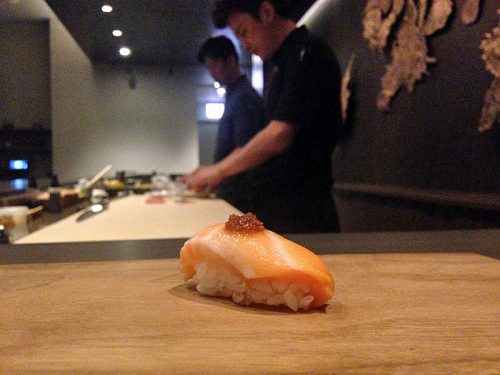
B.K. Park at Mako
Park is in the unfortunate position of intending to be the one to bring a high end omakase experience to Chicago—he signed the lease for Mako two years ago—and instead finding himself, by the time he opened, at the back end (so far) of a trend. But he doesn’t mind too much—”I think it’s good to have more omakase restaurants. Chicago didn’t have any, and now they keep opening. People understanding what omakase is, is good.”
Park had customers he served personally at a sushi bar at both Arami and Juno (the latter of which he owns), but he says, “I’ve been dreaming about having an omakase restaurant in Chicago all the time, since Mirai, and at Arami. It’s the dream of a lot of sushi chefs to open an omakase sushi restaurant. Like for me, it’s my best possible experience of sushi. You get to be close to the customers, and I’m putting all my ideas into [the food], it shows all my experience from my whole entire life.”
Even with Kyōten getting the bulk of media attention at the moment, he feels Mako is in a good position after only being open a month, with its $175 menu drawing steady business—”Basically Friday and Saturday, we’re booked, really busy, Thursday and Sunday, we’re pretty busy, Tuesday, Wednesday, it’s kind of up and down,” he says. “But it’s good. Everybody’s happy, and I’m really happy.”
I started this looking for the sign that the tasting menu bubble might burst—and instead, I found that Chicago had developed a taste for $200 sushi that literally couldn’t have existed eight months earlier, sufficient to book up Kyōten weeks in advance, and mostly fill up Mako a month in, and judging by my weeknight experience there, fill up Omakase Takeya, too. And then, as I was finishing up, another tasting menu restaurant was announced (Moody Tongue’s, with Jared Wentworth running the kitchen).
In fact, it’s surprising how indestructible tasting menu restaurants have proven in recent years. The competitive set Grace faced in 2012—”Alinea, L2O, Ria, Graham Elliott, Spiaggia and Tru”—may be 2/3 gone, as is Grace of course, but only factors outside the food itself (the assault that ended 42 Grams, the fact of who Sixteen’s ultimate boss was) have done in such places in the last few years. So, tasting menus, the future has never been brighter!
EXCEPT. WE STARTED TALKING ABOUT one kind of tasting menu—the Alinea type, the Grace type. The type that’s descended from French brigade kitchens and waitstaff dressed like the Austrian army.
And we wound up talking about 12-seat restaurants where the chef brings your plate to you. Or doesn’t even mess with a plate, he just drops that nigiri right in your palm. It seems like fine dining has become something like Hollywood—there’s little indie films, and there are big budget things packing them in, but the middle ground of the 40 or 60 seat high end dining experience with a big staff offering precision service has kind of… evaporated. The last places like that to open in town, Oriole and Smyth, opened in 2016.
Back to Brother Muser. Why does it matter? If the 12-seat joint offers a model for chefs to do it on their own and get by, what do we need the swanky multimillion-dollar tasting investment opportunity for? Just so rich dudes have a clubhouse?
“Don’t make me sound like an asshole,” Muser says. “But the Grace type of restaurant—I should say, the Alinea type, the Vespertine type, the new Albert Adria place, what’s it called, Enigma, type—we’re trying to compete on a global level. We don’t look around Chicago—we do, but we’re looking around the world. We’re looking and we’re asking ourselves—and the mayor and Choose Chicago and all those people are sure behind this 1000%—what is going to get that person to leave O’Hare and book a hotel downtown for a few days and eat at 3 or 4 of these places?
“Restaurants like that stand as beacons on high, that people can aspire to. Or make fun of, because it’s easy to make fun of it. It’s art. You have to keep your sense of humor about it, because so much of what we do is silly. And it’s not for everybody. Not everybody goes to the Art Institute and stares at a painting for twenty minutes. But some people do. We are a market that gives birth to crazy beautiful experiences, and what we do at the ultra high end, it trickles down. It finds a way to dye the water.
“That takes people who sit in rooms for months arguing over the weird little nuances of service. It’s the thought that goes into every move the guest makes. What’s the journey from the front desk to the dining room going to be like? It’s finding those pros, and making more of them so our city has an arsenal of them. And don’t get me wrong, it’s not all richy riches who go out and eat at these places. I’ve seen it my whole life. It’s waiters and bartenders who don’t go out for a month to save their pennies, and then they come and spend them at your place. They are looking for you to show them what they can be.
“And the onus is on you, when you set those prices, to be a restaurant that knows what’s at stake,” he says. “If you dare to take that much money from people for dinner, you better be that good at everything.”
The Most Expensive Meals in Chicago
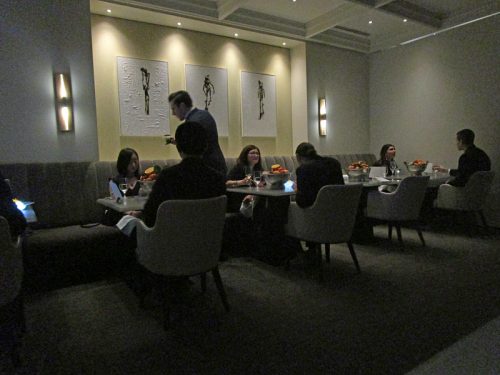
One of the Salon dining rooms at Alinea
It’s impossible to make an exact ranking of the most expensive restaurants, because many have multiple options, and may vary throughout the year as well. But the following list gives a rough idea of where Chicago’s restaurants rank:
1. Alinea
Alinea has different options and even different pricepoints at different times (want a bargain? Go at 5:30), with the lowest, The Salon, still starting at over $200 ($205, to be precise) and the highest coming in just under $400 (the $395 kitchen table, which requires six of you to want to pay it). The most internationally celebrated, most Michelin-bedecked restaurant in town is unsurprisingly the highest priced ticket in town—and of course, you’ll want the wine pairings, which start at $145 but ascend into reserve and super-reserve levels.
2. Stone Flower
Opening sometime this spring or summer, Jacob Bickelhaupt’s 12-seat restaurant has reportedly set its price at $250 plus a 20% service charge, making it an even $300.
3. Oriole
At $215 (with beverage pairings at $125 or $250), Oriole charges one premium price for a warm, soul-nurturing evening.
4. Next
Next is a hard one to rank, with two of its menus each year starting as low as $135 at off hours (but more like $185 at prime time). The third menu is always a premium one, shooting to $235-265. Assuming that most guests buy season tickets, they’re likely averaging at least $200 per meal, with beverage pairings starting at $95 but ascending to reserve levels.
5. Yugen
Mari Katsumura’s Japanese-inflected tasting menu (in the former Grace space) started at a flat $205, with a beverage pairing at $135. Recently added: a shorter menu at $110.
6. Smyth
Another hard one to rank, as it has at least four levels of tasting menus at a given time, ranging from a light tasting in the lounge for $95 to the high end at $225. But kudos for making its innovative food approachable at the level diners choose for themselves.
7. Acadia
The other two-Michelin-star restaurant in town (with Oriole and Smyth) is the relative bargain of the group at $185 for its tasting menu.
8. Kyōten
Otto Phan’s outstanding sushi experience is a flat $220, but that includes a service charge, so assuming 20%, that works out to the equivalent of about $183.
9. Mako
Just behind Kyōten is the new sushi omakase from B.K. Park of Juno, at $175 with an excellent $85 sake and wine pairing.
10. Everest
The venerable Alsatian restaurant atop the Chicago Stock Exchange charges $165, with wine pairings for $125.
Next 10: Schwa ($160), El Ideas ($155), Spiaggia ($105-155), Elizabeth (large variation between menus but presently up to $155), Blackbird ($145), Temporis ($145), Goosefoot ($145), Les Nomades ($130-145), Brass Heart ($125-145), Topolobampo ($140).
Michael Gebert eats all of them for you, so you should buy The Fooditor 99.
Note: Thanks to Ed Fisher for a correction that the $200 Kitsune meal wasn’t the most expensive ever at Elizabeth or Kitsune (that was a Noma dinner at $225)
Latest
Join the Discussion
After you comment, click Post. If you're not already logged in you will be asked to log in or register with Disqus.





